Exhibits
By Karen Osburn, Archivist
 In April I had another opportunity to explore some museums I have not yet visited and I was very enthused about this chance. There are people who aren’t excited to learn about ancient civilizations, old architecture, older tools, strange fossils, dinosaurs, different cultures, high technology, low technology, national fashions, paintings, sculptures, multi-media art, gems and minerals or the seemingly endless variations of natural science. I am certain many people will find my interest in all these things just a bit puzzling. But, for me the endless variations of the natural sciences, the bountiful creativity of human minds and hands, the mysteries that unravel about the building of the Sphinx and Pyramids, to see a culture’s treasures revealed in an exhibition like the Terracotta army from the Museum of Qin Terracotta Warriors and Horses and the Qin Shi Huang Mausoleum is really a once in a life time experience. I am fascinated by what I can learn from a museum exhibition.
In April I had another opportunity to explore some museums I have not yet visited and I was very enthused about this chance. There are people who aren’t excited to learn about ancient civilizations, old architecture, older tools, strange fossils, dinosaurs, different cultures, high technology, low technology, national fashions, paintings, sculptures, multi-media art, gems and minerals or the seemingly endless variations of natural science. I am certain many people will find my interest in all these things just a bit puzzling. But, for me the endless variations of the natural sciences, the bountiful creativity of human minds and hands, the mysteries that unravel about the building of the Sphinx and Pyramids, to see a culture’s treasures revealed in an exhibition like the Terracotta army from the Museum of Qin Terracotta Warriors and Horses and the Qin Shi Huang Mausoleum is really a once in a life time experience. I am fascinated by what I can learn from a museum exhibition.
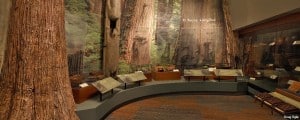 Many years ago, most museums did exhibitions using the time tested tool of the diorama. Dioramas, both life size and in miniature, were used to tell a story. Whether it was the story of cultures like the Seneca, Mohawk, Navajo, Chinese, Mesopotamian, Egyptian, wealthy urban dwellers, poor tenement residents in NYC or beautiful undersea or woodland dioramas these amazing works were created by artists often working in wax, wire, paint, papier-mâché, and clay to create a 3D vision of life in a time and place very different from ours. Standing in front of a diorama I have been able to imagine myself in a prehistoric ocean watching eurypterids and crinoids or in a wooded glade watching a black bear with cubs looking for food. I have been able to imagine myself a member of a group of indigenous people growing food near a village, or weaving a rug from sheep in the southwest of the United States. Dioramas have always been a visual interactive for me, creating images in my mind that spark my imagination.I find them fascinating.
Many years ago, most museums did exhibitions using the time tested tool of the diorama. Dioramas, both life size and in miniature, were used to tell a story. Whether it was the story of cultures like the Seneca, Mohawk, Navajo, Chinese, Mesopotamian, Egyptian, wealthy urban dwellers, poor tenement residents in NYC or beautiful undersea or woodland dioramas these amazing works were created by artists often working in wax, wire, paint, papier-mâché, and clay to create a 3D vision of life in a time and place very different from ours. Standing in front of a diorama I have been able to imagine myself in a prehistoric ocean watching eurypterids and crinoids or in a wooded glade watching a black bear with cubs looking for food. I have been able to imagine myself a member of a group of indigenous people growing food near a village, or weaving a rug from sheep in the southwest of the United States. Dioramas have always been a visual interactive for me, creating images in my mind that spark my imagination.I find them fascinating.
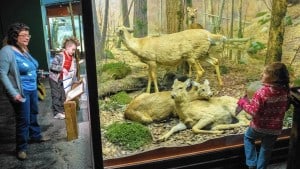 I have worked in a museum that relied heavily on dioramas to tell stories. One of my favorite memories was the diorama of the dentist pulling a man’s tooth and the patient struggling to get away. Another was a general store setting with a dog begging for a cracker from a barrel. The story was conveyed immediately, a rich feast for the eyes. I didn’t need to touch anything to feel the dental patient’s fear, or to smell the inside of the store. My personal experiences and memories were triggered by what I saw and the result was like magic.
I have worked in a museum that relied heavily on dioramas to tell stories. One of my favorite memories was the diorama of the dentist pulling a man’s tooth and the patient struggling to get away. Another was a general store setting with a dog begging for a cracker from a barrel. The story was conveyed immediately, a rich feast for the eyes. I didn’t need to touch anything to feel the dental patient’s fear, or to smell the inside of the store. My personal experiences and memories were triggered by what I saw and the result was like magic.
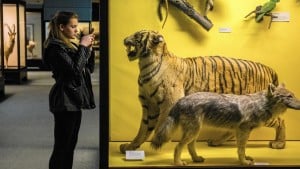 One of my very favorite exhibitions is an open diorama of a northeastern hardwood forest. Near the exhibit is a set of drawings of woodland creatures that are in the diorama. It is a bit like “Where’s Waldo” only with mice, shrews, martins, skunks and other forest animals. I can’t tell you how long I have spent looking for some of these little furry ones. This is a good size exhibit and all that separates you from the “woods” is a railing. I know as I lean over the rail there is a tiny, little shrew near me on the “forest floor” but as carefully as I look it is invisible to me. My feeling of accomplishment when I finally discover him/her sitting next to a leaf is immense. Not all interactives involve touch, my favorite one involves vision!
One of my very favorite exhibitions is an open diorama of a northeastern hardwood forest. Near the exhibit is a set of drawings of woodland creatures that are in the diorama. It is a bit like “Where’s Waldo” only with mice, shrews, martins, skunks and other forest animals. I can’t tell you how long I have spent looking for some of these little furry ones. This is a good size exhibit and all that separates you from the “woods” is a railing. I know as I lean over the rail there is a tiny, little shrew near me on the “forest floor” but as carefully as I look it is invisible to me. My feeling of accomplishment when I finally discover him/her sitting next to a leaf is immense. Not all interactives involve touch, my favorite one involves vision!
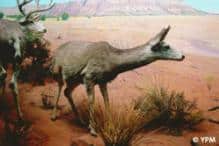 I remember how disappointed I was when I heard that some of the dioramas in many of my favorite museums were going “extinct.” They were being replaced by computers, monitors, push buttons and exhibits that DID things. I felt sad that some of the scenes that had sparked my imagination would no longer be there to be shared with other visitors. Oh, I knew the arguments for removing them…people wanted to touch things not just see them, children could learn more from computers, these once beautiful scenes were now dusty and faded, it would cost too much to repair them, the artists who created them were gone and there were few people who knew how to touch them up or create new leaves, grass or props to fill in the scene. In my eyes we had allowed an entire genre of art to disappear and replaced it with lights, sounds, and carnival rides. It seemed to me a bit like replacing a DaVinci or Monet with Garfield, or a Fred Basset cartoon.
I remember how disappointed I was when I heard that some of the dioramas in many of my favorite museums were going “extinct.” They were being replaced by computers, monitors, push buttons and exhibits that DID things. I felt sad that some of the scenes that had sparked my imagination would no longer be there to be shared with other visitors. Oh, I knew the arguments for removing them…people wanted to touch things not just see them, children could learn more from computers, these once beautiful scenes were now dusty and faded, it would cost too much to repair them, the artists who created them were gone and there were few people who knew how to touch them up or create new leaves, grass or props to fill in the scene. In my eyes we had allowed an entire genre of art to disappear and replaced it with lights, sounds, and carnival rides. It seemed to me a bit like replacing a DaVinci or Monet with Garfield, or a Fred Basset cartoon.
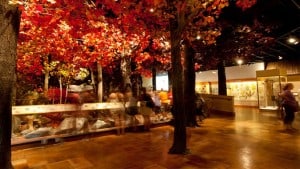 What happens to dismantled dioramas? I tried to find out, but could not find any place that collected parts or even entire dioramas when they were retired. Some person had told me at one point that there was a museum that held decommissioned dioramas, but I am sure that was wishful thinking since I could not find reference to any organization of that kind on-line. I know some museums take them apart and store the carefully made foliage and taxidermied critters away, in case they are ever needed again. However, the beautifully detailed backdrop paintings are often destroyed in the dismantling and are not salvageable.
What happens to dismantled dioramas? I tried to find out, but could not find any place that collected parts or even entire dioramas when they were retired. Some person had told me at one point that there was a museum that held decommissioned dioramas, but I am sure that was wishful thinking since I could not find reference to any organization of that kind on-line. I know some museums take them apart and store the carefully made foliage and taxidermied critters away, in case they are ever needed again. However, the beautifully detailed backdrop paintings are often destroyed in the dismantling and are not salvageable.
When I visit a museum with dioramas today, I take a moment to not only use my imagination and place myself in the scene, but I also take the time to appreciate the incredible artistry and talent that went into creating these windows in time. I hope you do too.
